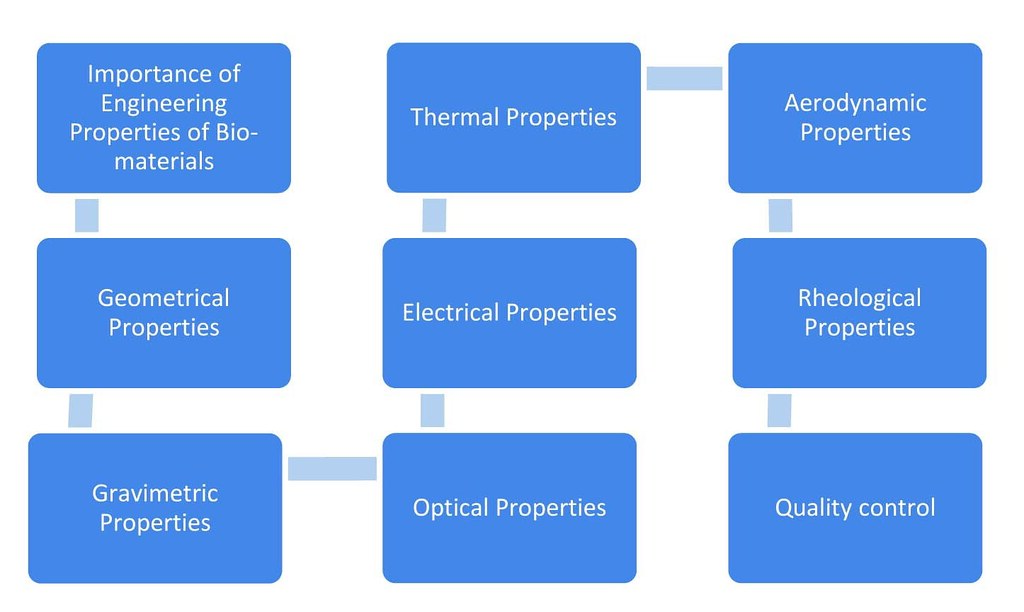ENGINEERING
PROPERTIES OF BIO-MATERIALS
AE 602
Course
objective:
·
To acquaint and equip the students with different techniques of
measurement of engineering properties and their importance in the design of
processing and material handling equipments.
·
To acquaint and equip the students with the latest standards to
maintain food quality as well as to study Hazard Analysis Critical Control
Point (HACCP) protocol.
Practical
S.
N.
|
Name
of the experiment
|
Hours
|
1
|
Determination of shape and size of Grains, fruits and vegetables
|
2
|
2
|
Determination of Particle density/True density, Bulk Density porosity
and Specific Gravity of Food Grains
|
2
|
3
|
Determination of Angle of Ripose and Coefficient of Internal and
External Friction for Food Grains
|
2
|
4
|
To study the separation
behaviour of a grain sample in a vertical wind tunnel
(Aspirator column)
|
2
|
5
|
Determination of Stress-Strain Behaviour of Different Food Grains
|
2
|
6
|
Determination of Thermal Conductivity of Different Food Grains
|
2
|
7
|
Determination of Thermal Diffusivity of Different Food Grains
|
2
|
8
|
Determination of Specific Heat of Food Grains
|
2
|
9
|
Determination of Electrical Conductivity of Liquid Food Materials
|
2
|
10
|
Detection of
adulteration in food products viz. milk, ghee, honey etc.
|
2
|
Total
|
20
|
|
Reference:
1.
Mohesenin
N.N. 1980. Physical Properties of Plant and Animal Materials. Gordon
& Breach Science Publ.
2.
Mohesenin
NN. 1980. Thermal Properties of Foods and Agricultural Materials. Gordon
& Breach Science Publ.
3.
Peleg
M & Bagelay EB. 1983. Physical Properties of Foods. AVI Publ. Co.
4.
Rao
M.A. & Rizvi S.S.H. (Eds.). 1986. Engineering Properties of Foods.
Marcel Dekker.
5.
Singhal
OP & Samuel DVK. 2003. Engineering Properties of Biological Materials.
Saroj Prakasan.
6.
Hallstrom
B, Meffert HF, Th Spesis WEL & Vos G. 1983. Physical Properties of Food.
Elsevier.
7.
Ronal
Jowitt, Felix Escher, Bengt Hallsrram, Hans F, Th. Meffert, Walter EC Spices
& Gilbert Vox. 1983. Physical Properties of Foods. Applied Science
Publ.
Evaluation
Scheme
The
questions will cover all the chapters of the syllabus. The evaluation scheme
will be as indicated in the table below
Chapter
|
Hours
|
Marks
Distribution*
|
1
|
2
|
8
|
2
|
4
|
|
3
|
3
|
8
|
4
|
2
|
|
5
|
3
|
4
|
6
|
3
|
4
|
7
|
3
|
4
|
8
|
5
|
12
|
9
|
5
|
|
Total
|
30
|
40
|
Ø The questions
setting should be in the multiplication of either 8 or 10.
Here is a lecture note compiled by Er. Samir Sakya (A teacher of IOE Department of Agricultural Engineering) for B. Agri III/I
Here is a lecture note compiled by Er. Samir Sakya (A teacher of IOE Department of Agricultural Engineering) for B. Agri III/I
For download/read click here



Post A Comment:
0 comments so far,add yours
We value your comments. Let us know your thoughts below!